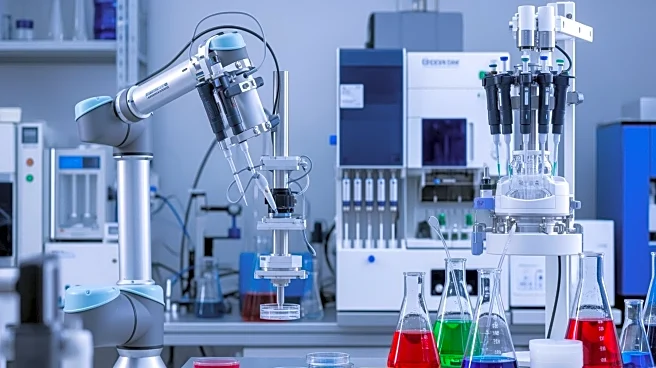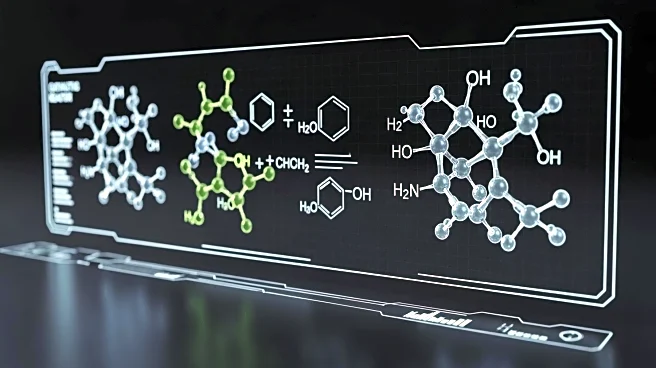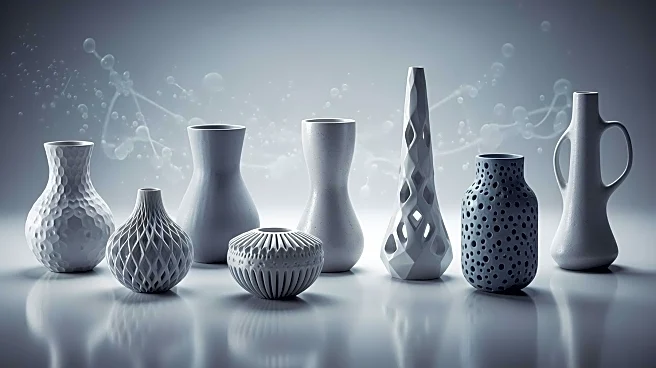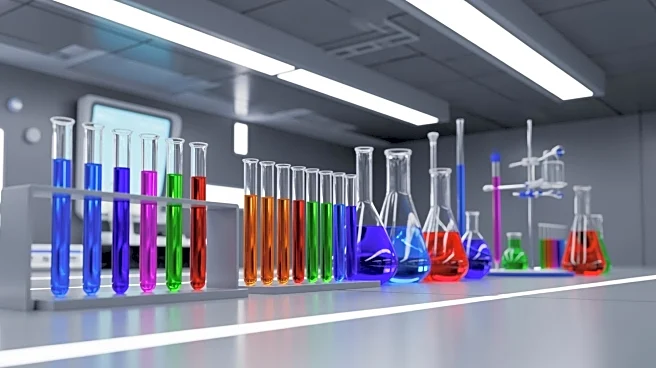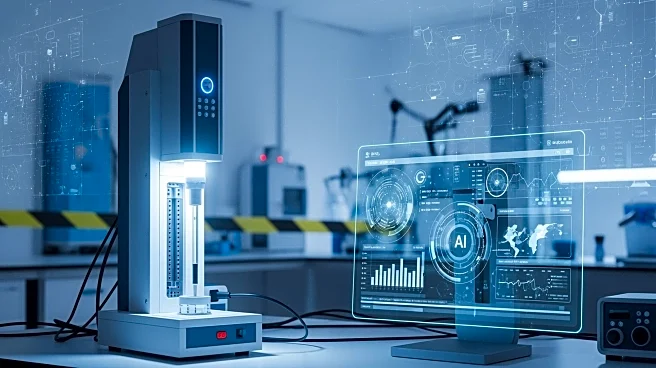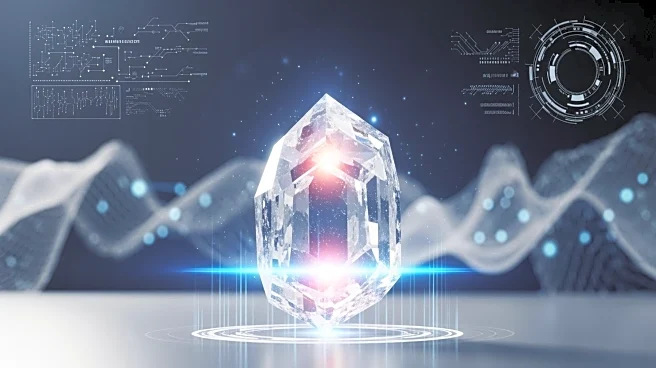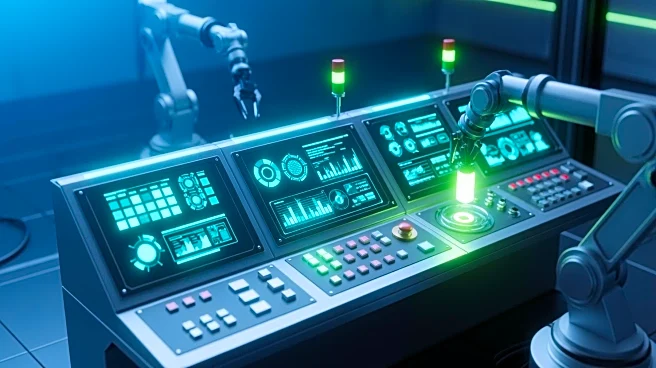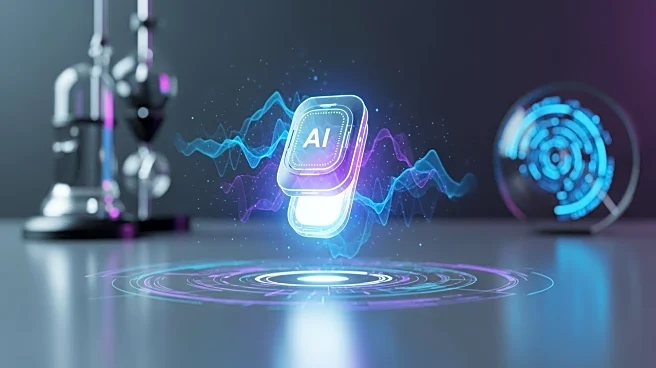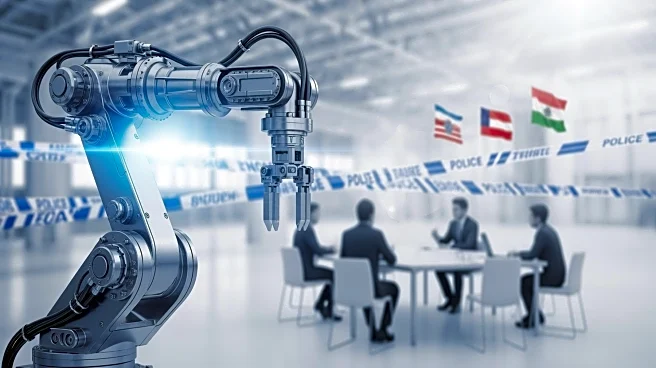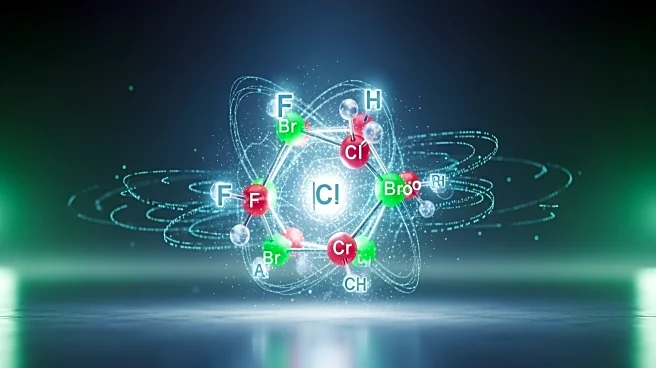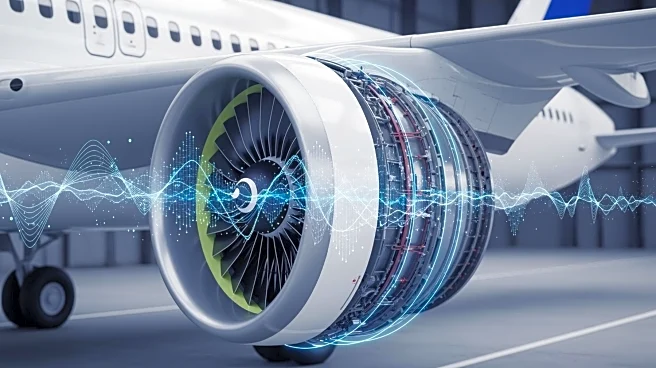What's Happening?
A recent study led by Bartosz Grzybowski and Yanqiu Jiang has introduced a robotic platform designed to analyze chemical reactions across a high-dimensional parameter space. This innovative system is capable
of executing and analyzing thousands of samples daily at a relatively low cost per sample. Utilizing ultraviolet-visible spectroscopy enhanced with algorithmic spectrum decomposition and anomaly detection, the platform minimizes reliance on costly techniques like nuclear magnetic resonance (NMR). The robot systematically explores reaction hyperspace, acquiring spectra and combining crude mixtures for chromatographic separation and identification. This method allows the creation of a basis dataset, serving as a reference system for the reaction network under analysis. By constructing concentration-absorbance calibration curves, the team efficiently estimates yields and compositions at numerous hyperspace points, reducing the need for extensive high-performance liquid chromatography and NMR analyses.
Why It's Important?
The development of this robotic platform marks a significant advancement in the field of chemical reaction analysis. By providing a comprehensive understanding of reaction networks, the system has the potential to identify unexpected products and reaction pathways. This could lead to optimized reaction conditions and improved efficiency in chemical synthesis processes. The platform's applicability to various reaction types, including the Hantzsch pyridine synthesis and perovskite-type materials catalyst compositions, offers insights into mechanistic complexities. This innovation could benefit industries reliant on chemical synthesis, such as pharmaceuticals and materials science, by reducing costs and enhancing the precision of chemical analyses.
What's Next?
The study suggests that the robotic platform could be further developed to explore additional reaction types and conditions, potentially expanding its applicability across different fields of chemistry. Researchers and industries may adopt this technology to streamline their chemical analysis processes, leading to faster and more cost-effective research and development cycles. The platform's ability to efficiently estimate thermodynamic parameters like entropy and enthalpy change could also facilitate advancements in reaction modeling and simulation.
Beyond the Headlines
This development highlights the growing trend towards automation and machine learning in scientific research, particularly in chemistry. The use of robotic platforms and algorithmic analysis represents a shift towards more data-driven approaches, which could lead to new discoveries and innovations. Ethical considerations regarding the automation of scientific research processes may arise, particularly concerning the role of human oversight and decision-making in experimental design and analysis.
